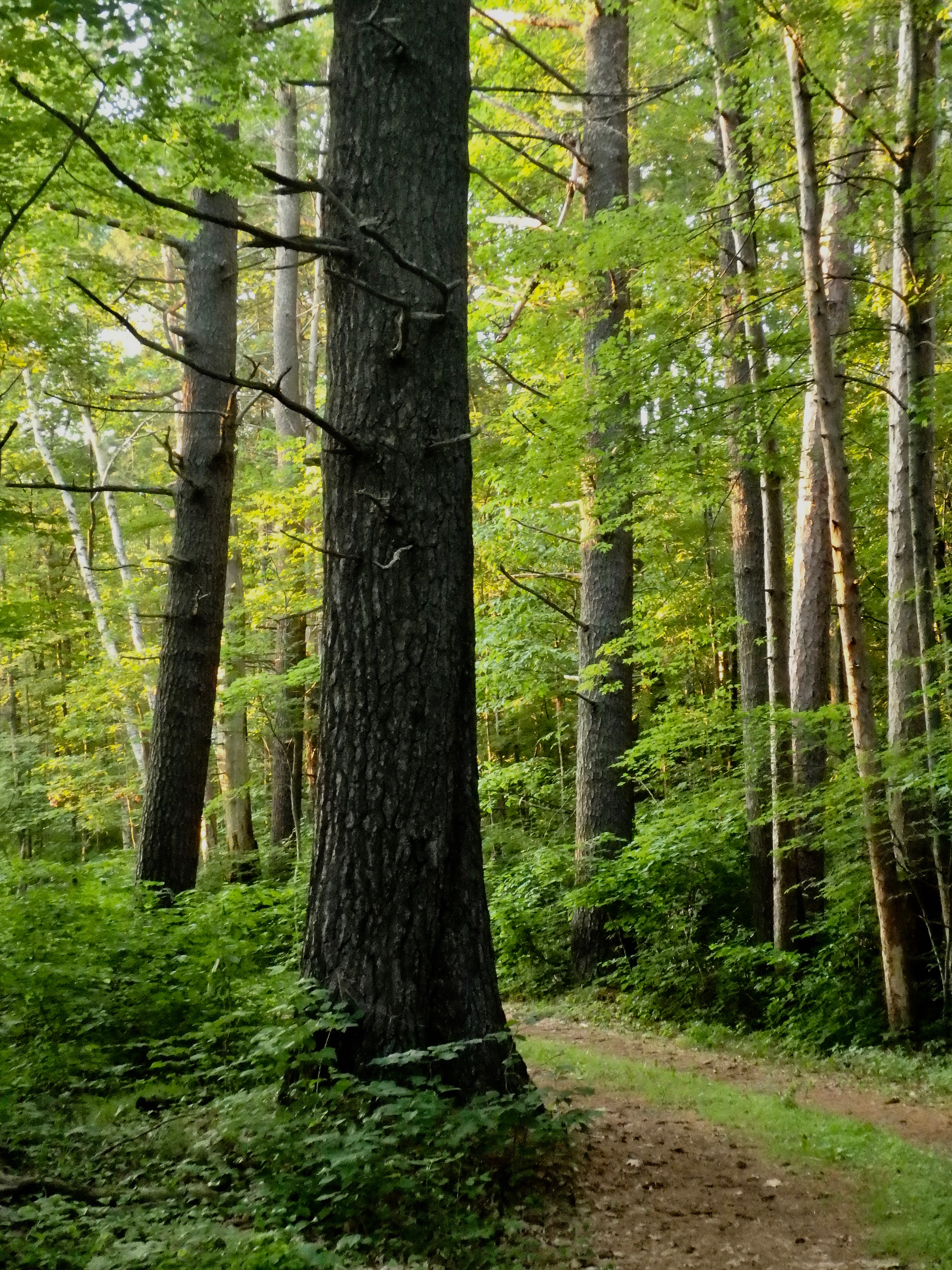JULY 7, 2019 -I spend a lot of time in the woods around our cabin in northwest Wisconsin. Over the years, I’ve seen trees sprout, grow, get sick and recover, get sick and die, die young, die old. I’ve seen hearty trees, ailing one, lucky trees, unlucky ones; freakishly crooked, ugly trees; beautiful, towering, textbook specimens. I have come to know many of them as close friends.
Like my anthropomorphic friends, my arbor friends have personalities that are affected by the weather, the seasons, the ever-changing lighting. Trees can’t walk, but they can talk, especially in a strong breeze off the lake or in a steady, gentle summer rain.
In these parts a little over a century ago, men built lumber camps, then mass murdered the trees. Enormous white pine, some close to 400 years old, that had survived fire and flood, drought and lightning succumbed to the sawyer’s blade. America was an adolescent in hyper-growth mode, and her appetite for virgin timber was insatiable. So was the hunger for profit in the house of Weyerhauser.
Like humanity, the woods are resilient. Sun, soil and rain nourished the survivors, and today, the progeny of those fallen giants strive skyward. But new threats abound—blister rust and the white pine weevil, and other maladies, all invasive, the result of mankind’s meddling. I do my best to counter “un-natural” pestilence, and in doing so, complicate the definition of “natural.”
But in helping a human friend, do I ask, “Does my assistance defy evolutionary intent?” Of course not. In helping the white pine here, I don’t say, “Sorry fella—that blister rust at the end of your bough? Tough. You’re on your own.”
Where my relationship with the trees gets complicated is when their numbers in one place or another need to be thinned “for the greater good”; to optimize conditions for the better, stronger specimens most likely to succeed. Yet over the years I have learned the folly of this assumption. And when I think to thin a thicket of volunteers and see how much a smaller, weaker sapling has added to its young height in the current growing season . . . I hesitate. Such gumption, such determination, such positive attitude! I then close my clippers and move on, searching for a diseased limb, as opposed to a healthy trunk. I’m merely a man, not the God of Arbor.
Last week, I ordered 100 white pine seedlings for planting at my younger son’s wedding celebration on this site next month (the American version of the Portuguese version last month, which featured my other favorite, the olive tree). It’s my son’s idea—to lead guests from the lakeside ceremony to a pathway through the woods, to a clearing atop the heights. There to plant some trees to grow through feast and famine and one day stand as tall as the giants of yore.
For in their kind and cousins could well stand the fate of the planet.
© 2019 Eric Nilsson

1 Comment
Love this piece (and really enjoyed the moving story…you’re still in lunch range, I hope). This article made me think of Barkskins by Annie Proulx (https://www.nytimes.com/2016/06/19/books/review/barkskins-by-annie-proulx.html). Incredible read, if you haven’t already!
Comments are closed.